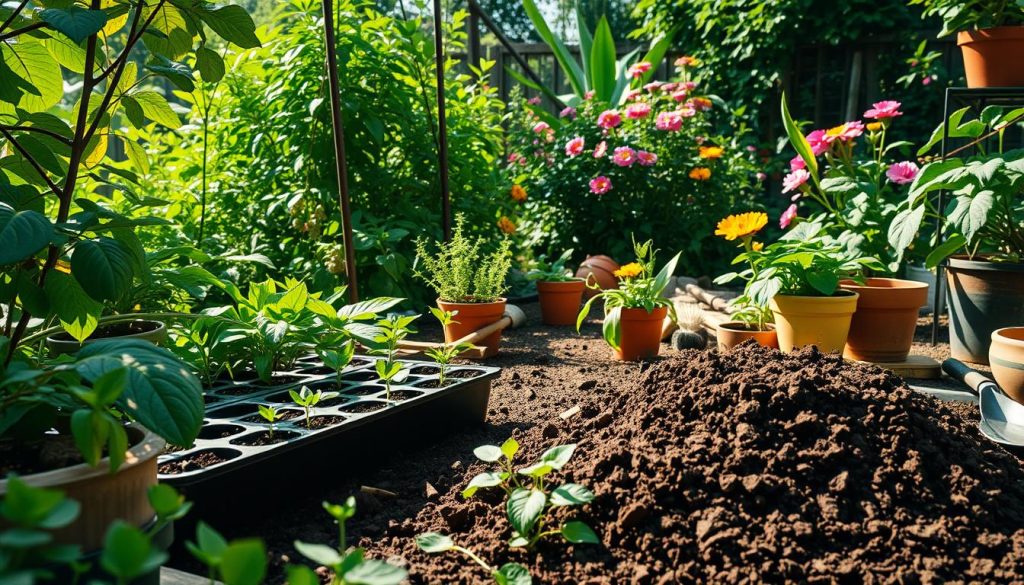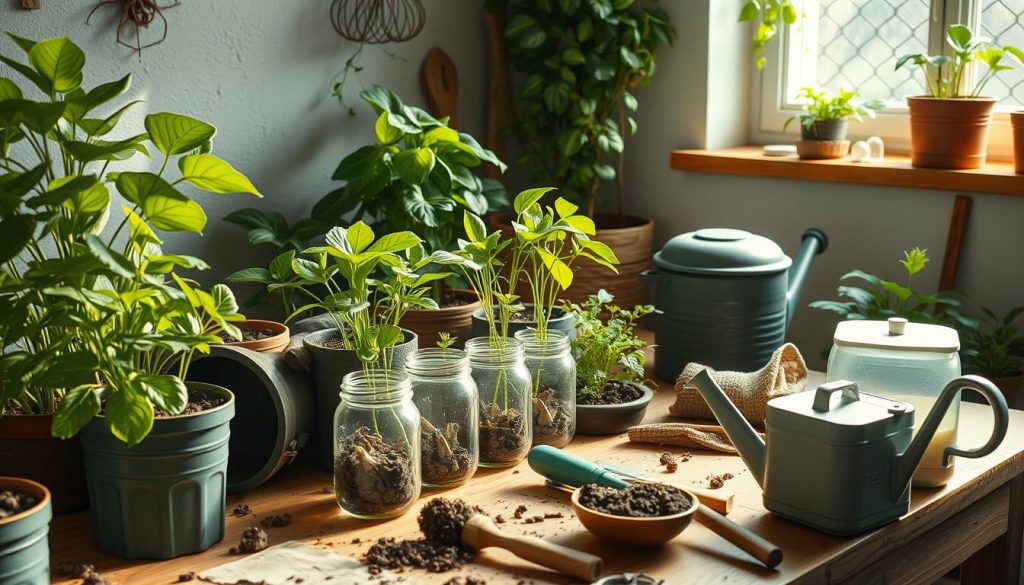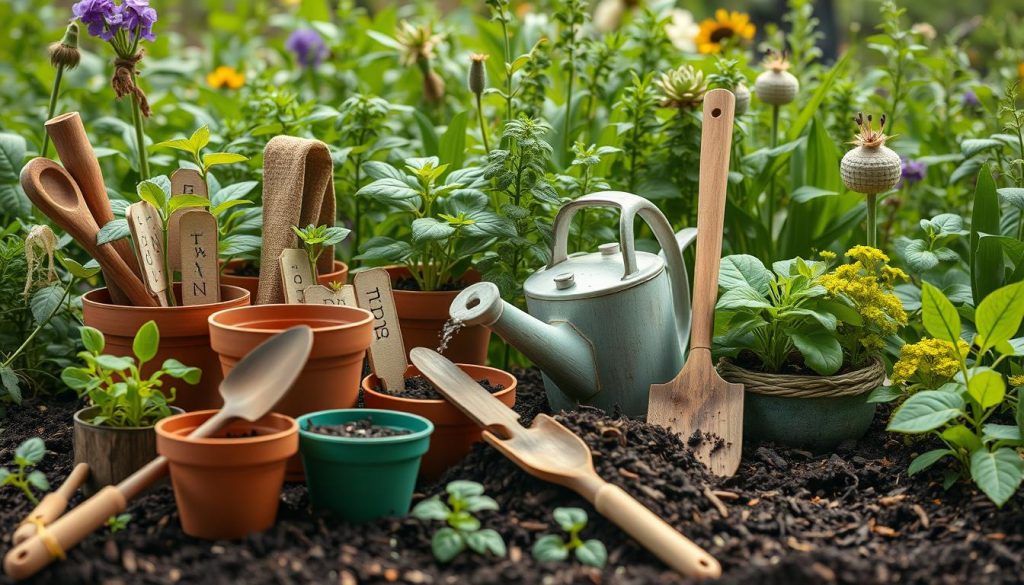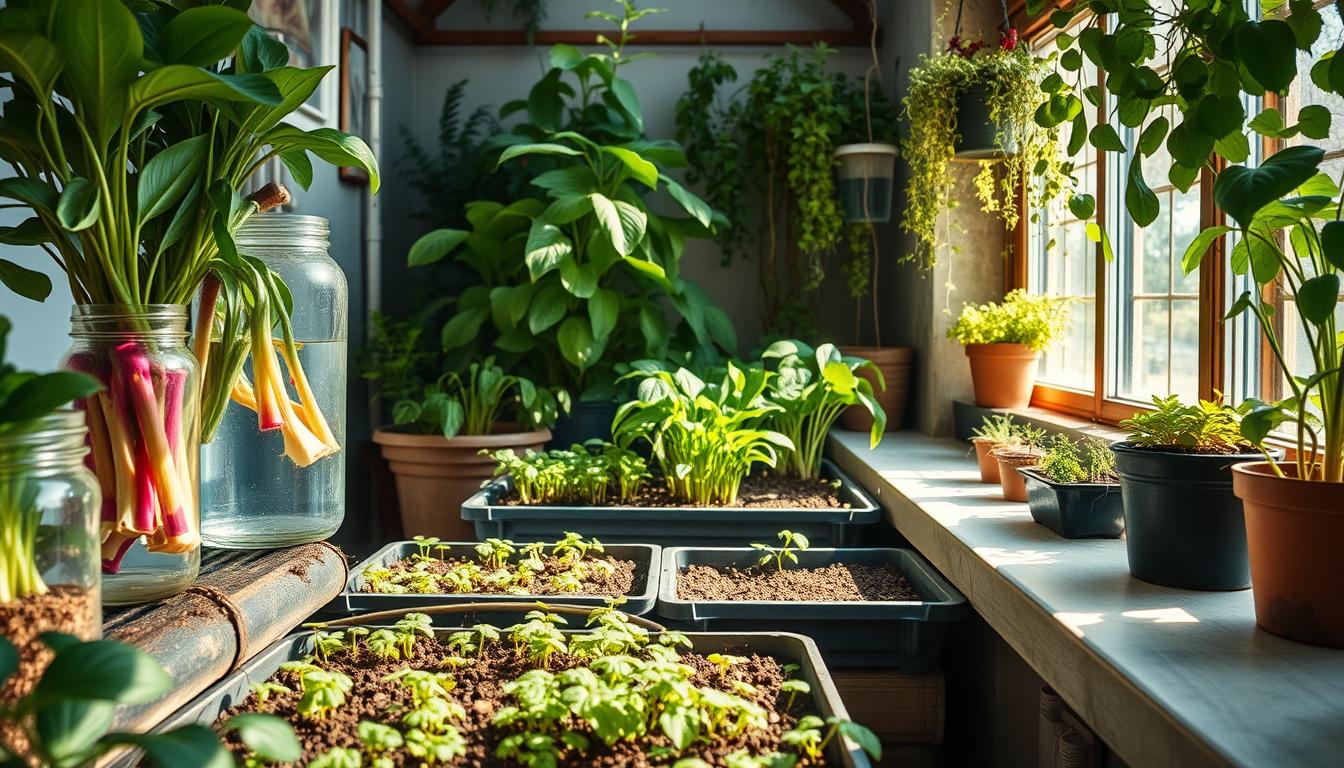I’m excited to share my knowledge on sustainable plant propagation methods. These have become key in my gardening routine. By using eco-friendly techniques, we can greatly reduce our environmental impact and help the ecosystem.
Methods like organic plant propagation are vital. They help save resources and cut down on waste. This is crucial for a greener future.
Exploring sustainable plant propagation has shown me its importance. Eco-friendly methods not only lessen our environmental harm but also support a sustainable future. By adopting organic techniques, we can make a difference and encourage others to join us.
In this article, I’ll share my top sustainable plant propagation methods. I’ll also give tips on starting with eco-friendly plant propagation.
Understanding Sustainable Plant Propagation Methods
Exploring plant propagation, I’ve learned the value of green methods. These practices help plants grow well and support sustainable gardening. They also help us reduce our impact on the environment.
Modern gardening relies on sustainable techniques. These methods save resources, cut down on waste, and boost biodiversity. Key benefits include:
- Conservation of water and soil
- Less use of harmful chemicals
- Healthier plant growth
Using sustainable gardening in plant propagation makes our ecosystems better. It’s good for the planet and keeps our gardens healthy for years. I’m eager to share more about eco-friendly practices and sustainable gardening.
Choosing the Right Plants for Propagation
Choosing the right plants is key for natural plant propagation success. I’m passionate about eco-friendly plant growth. Picking plants that grow well in your area is important. Native plants support local ecosystems, reduce invasive species, and boost biodiversity.
Native plants are tough and need little care, great for beginners. Favorites include succulents, herbs, and wildflowers. These plants grow fast, are easy to propagate, and add beauty to your garden.
Native vs. Non-Native Plants
Choosing between native and non-native plants matters for your ecosystem. Non-native plants can harm native species and biodiversity. Native plants, however, are well-suited to your local environment, making them a better choice for eco-friendly gardening.
Fast-Growing Varieties I Love
- Succulents: Perfect for indoor gardens and easy to propagate using leaf cuttings
- Herbs: Great for culinary gardens and can be propagated using seed saving techniques
- Wildflowers: Beautiful additions to outdoor gardens and can be propagated using natural plant propagation methods

Seasonal Considerations
Seasons play a role in plant selection for propagation. Different plants do well in different seasons. Choose varieties that match the current season for a thriving garden all year.
Techniques I Use for Sustainable Propagation
I’ve found some great ways to grow plants in a way that’s good for the planet. These methods help cut down on waste and make our environment healthier. By using these sustainable techniques, gardeners can really help our planet.
Using organic methods is key for a balanced garden. I love saving seeds from my plants to use later. It helps keep plant diversity alive and cuts down on buying seeds. I also take cuttings from plants to grow new ones. It’s simple and works well, perfect for beginners.

- Less waste and better for the environment
- Supports eco-friendly and organic gardening
- Keeps plant diversity alive
- Makes you less dependent on outside resources
By using these methods, my garden is now more sustainable. It’s better for me and the planet, thanks to these green growing techniques.
Tools and Materials to Support Eco-Friendly Propagation
To support eco-friendly plant propagation, having the right tools and materials is key. I practice green plant propagation and know how important the right equipment is. In my garden shed, I have a set of essential tools like a trowel, pruners, and a watering can.
I choose organic soil and fertilizers for healthy plant growth. I mix compost and well-rotted manure to create nutrient-rich soil. For fertilizers, I use natural options like fish emulsion and bone meal, avoiding synthetic chemicals.
Essential Tools in My Garden Shed
- Trowel for planting and transplanting
- Pruners for pruning and training plants
- Watering can for efficient watering

Sustainable Containers I Recommend
I suggest using sustainable containers made from natural materials like terracotta, wood, or bamboo. These containers are eco-friendly and add natural beauty to your garden. Using sustainable containers and green plant propagation practices helps create a thriving garden that supports eco-friendly plant propagation and sustainable gardening.
Nurturing Healthy Plants for Longevity
As we finish our look at sustainable plant growth, it’s key to focus on keeping plants healthy. By using eco-friendly ways to grow plants, our gardens can flourish for many years.
Watering Wisely and Conservatively
Watering plants right is a big part of keeping them healthy. I always try to use water wisely and water at the best times. This helps my plants grow well and supports my goal of sustainable gardening.
Recognizing and Managing Pests Naturally
It’s important to watch for pests and deal with them naturally. I avoid harsh chemicals and use organic methods instead. This keeps my garden balanced and my plants healthy.
When to Transplant for Optimal Growth
Knowing when to move plants is key for their health. I watch my plants closely and transplant them when it’s best. This helps them grow strong and healthy.

